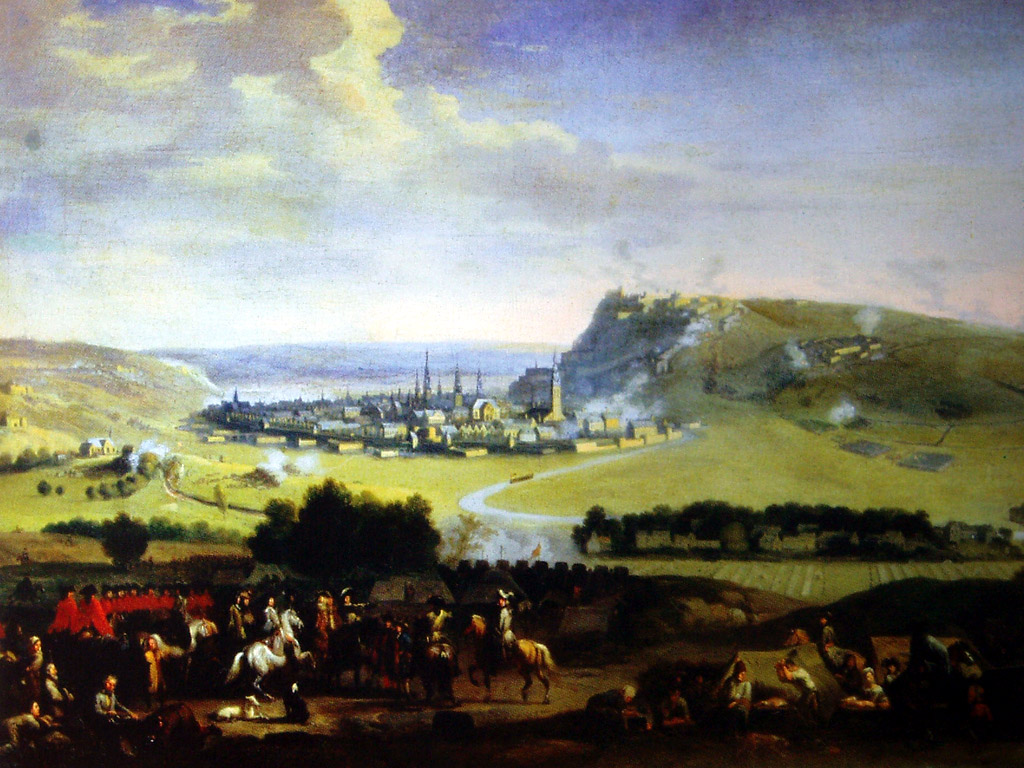|
Sir Edward Wyndham, 2nd Baronet
Sir Edward Wyndham, 2nd Baronet (''c.'' 1667 – 29 June 1695), of Orchard Wyndham, Somerset, was three times member of parliament for Ilchester, Somerset, from 1685 to 1687, from 1689 to 1690, and from 1690 to 1695. He was the fourth and only surviving son of Sir William Wyndham, 1st Baronet (c. 1632 – 1683) of Orchard Wyndham, MP and Sheriff of Somerset in 1679–80, by his wife Frances Hungerford, daughter of Anthony Hungerford of Farleigh Castle, Somerset. Wyndham married to Katherine Leveson-Gower, daughter of Sir William Leveson-Gower, 4th Baronet. His heir was his son, Sir William Wyndham, 3rd Baronet (c. 1688 – 1740), of Orchard Wyndham. References People from Somerset Wyndham, Sir Edward, 2nd Baronet 1660s births 1695 deaths Edward Edward is an English given name. It is derived from the Anglo-Saxon name ''Ēadweard'', composed of the elements '' ēad'' "wealth, fortune; prosperous" and '' weard'' "guardian, protector”. History The nam ... [...More Info...] [...Related Items...] OR: [Wikipedia] [Google] [Baidu] |
Earl Of Egremont
Earl of Egremont was a title in the Peerage of Great Britain. It was created in 1749, along with the subsidiary title Baron of Cockermouth, in Cumberland, for Algernon Seymour, 7th Duke of Somerset, with remainder to his nephews Sir Charles Wyndham, 4th Baronet, of Orchard Wyndham, and Percy Wyndham-O'Brien. The Duke had previously inherited the Percy estates, including the lands of Egremont in Cumberland, from his mother Lady Elizabeth Percy, daughter and heiress of Joceline Percy, 11th Earl of Northumberland. In 1750 Sir Charles Wyndham succeeded according to the special remainder as second Earl of Egremont on the death of his uncle. His younger brother Percy Wyndham-O'Brien was created Earl of Thomond in 1756. The Wyndham Baronetcy, of Orchard Wyndham in the County of Somerset, had been created in the Baronetage of England in 1661 for William Wyndham, who represented Somerset and Taunton in Parliament. His son, the second Baronet, represented Ilchester in the House of Co ... [...More Info...] [...Related Items...] OR: [Wikipedia] [Google] [Baidu] |
English MPs 1685–1687
English usually refers to: * English language * English people English may also refer to: Peoples, culture, and language * ''English'', an adjective for something of, from, or related to England ** English national identity, an identity and common culture ** English language in England, a variant of the English language spoken in England * English languages (other) * English studies, the study of English language and literature * ''English'', an Amish term for non-Amish, regardless of ethnicity Individuals * English (surname), a list of notable people with the surname ''English'' * People with the given name ** English McConnell (1882–1928), Irish footballer ** English Fisher (1928–2011), American boxing coach ** English Gardner (b. 1992), American track and field sprinter Places United States * English, Indiana, a town * English, Kentucky, an unincorporated community * English, Brazoria County, Texas, an unincorporated community ... [...More Info...] [...Related Items...] OR: [Wikipedia] [Google] [Baidu] |
Wyndham Family
Baron Leconfield, of Leconfield in the East Riding of the County of York, is a title in the Peerage of the United Kingdom. It was created in 1859 for Col. George Wyndham (1787–1869). He was the eldest illegitimate son and adopted heir of George Wyndham, 3rd Earl of Egremont (1751–1837) (see Earl of Egremont for earlier history of the family), from whom he inherited Petworth House in Sussex, Egremont Castle and Cockermouth Castle in Cumbria and Leconfield Castle in Yorkshire, all formerly lands of Josceline Percy, 11th Earl of Northumberland (1644–1670), inherited by Charles Seymour, 6th Duke of Somerset (1662–1748) on his marriage to the Percy heiress Elizabeth Percy (1667–1722) and inherited as one of the co-heirs of his son Algernon Seymour, 7th Duke of Somerset, 1st Earl of Egremont (1684–1750) by the latter's nephew Sir Charles Wyndham, 4th Baronet (1710–1763) of Orchard Wyndham in Somerset, who inherited by special remainder the Earldom of Egremont. The 1s ... [...More Info...] [...Related Items...] OR: [Wikipedia] [Google] [Baidu] |
1695 Deaths
It was also a particularly cold and wet year. Contemporary records claim that wine froze in the glasses in the Palace of Versailles. Events January–March * January 7 (December 28, 1694 O.S.) – The United Kingdom's last joint monarchy, the reign of husband-and-wife William III of England, King William III and Mary II of England, Queen Mary II comes to an end with the death of Queen Mary, at the age of 32. Princess Mary had been installed as the monarch along with her husband and cousin, Willem Hendrik von Oranje, Stadtholder of the Dutch Republic, in 1689 after James II of England, King James II was deposed by Willem during the "Glorious Revolution". * January 14 (January 4 O.S.) – The Royal Navy warship HMS Nonsuch (1668), HMS ''Nonsuch'' is captured near England's Isles of Scilly by the 48-gun French privateer ''Le Francois''. ''Nonsuch'' is then sold to the French Navy and renamed ''Le Sans Pareil''. * January 24 – Milan's Royal Palace of Milan#17th and 18th c ... [...More Info...] [...Related Items...] OR: [Wikipedia] [Google] [Baidu] |
1660s Births
Year 166 ( CLXVI) was a common year starting on Tuesday (link will display the full calendar) of the Julian calendar. At the time, it was known as the Year of the Consulship of Pudens and Pollio (or, less frequently, year 919 ''Ab urbe condita''). The denomination 166 for this year has been used since the early medieval period, when the Anno Domini calendar era became the prevalent method in Europe for naming years. Events By place Roman Empire * Dacia is invaded by barbarians. * Conflict erupts on the Danube frontier between Rome and the Germanic tribe of the Marcomanni. * Emperor Marcus Aurelius appoints his sons Commodus and Marcus Annius Verus as co-rulers (Caesar), while he and Lucius Verus travel to Germany. * End of the war with Parthia: The Parthians leave Armenia and eastern Mesopotamia, which both become Roman protectorates. * A plague (possibly small pox) comes from the East and spreads throughout the Roman Empire, lasting for roughly twenty years. * T ... [...More Info...] [...Related Items...] OR: [Wikipedia] [Google] [Baidu] |
Baronets In The Baronetage Of England
A baronet ( or ; abbreviated Bart or Bt) or the female equivalent, a baronetess (, , or ; abbreviation Btss), is the holder of a baronetcy, a hereditary title awarded by the British Crown. The title of baronet is mentioned as early as the 14th century, however in its current usage was created by James I of England in 1611 as a means of raising funds for the crown. A baronetcy is the only British hereditary honour that is not a peerage, with the exception of the Anglo-Irish Black Knights, White Knights, and Green Knights (of whom only the Green Knights are extant). A baronet is addressed as "Sir" (just as is a knight) or "Dame" in the case of a baronetess, but ranks above all knighthoods and damehoods in the order of precedence, except for the Order of the Garter, the Order of the Thistle, and the dormant Order of St Patrick. Baronets are conventionally seen to belong to the lesser nobility, even though William Thoms claims that: The precise quality of this dignity ... [...More Info...] [...Related Items...] OR: [Wikipedia] [Google] [Baidu] |
People From Somerset
A person ( : people) is a being that has certain capacities or attributes such as reason, morality, consciousness or self-consciousness, and being a part of a culturally established form of social relations such as kinship, ownership of property, or legal responsibility. The defining features of personhood and, consequently, what makes a person count as a person, differ widely among cultures and contexts. In addition to the question of personhood, of what makes a being count as a person to begin with, there are further questions about personal identity and self: both about what makes any particular person that particular person instead of another, and about what makes a person at one time the same person as they were or will be at another time despite any intervening changes. The plural form "people" is often used to refer to an entire nation or ethnic group (as in "a people"), and this was the original meaning of the word; it subsequently acquired its use as a plural form of ... [...More Info...] [...Related Items...] OR: [Wikipedia] [Google] [Baidu] |
Sir William Wyndham, 3rd Baronet
Sir William Wyndham, 3rd Baronet (c. 168817 June 1740), of Orchard Wyndham in Somerset, was an English Tory politician who sat in the House of Commons from 1710 to 1740. He served as Secretary at War in 1712 and Chancellor of the Exchequer in 1713 during the reign of the last Stuart monarch, Queen Anne (1702–1714). He was a Jacobite leader firmly opposed to the Hanoverian succession and was leader of the Tory opposition in the House of Commons during the reign of King George I (1714–1727) and during the early years of King George II (1727–1760). His first wife was Lady Catherine Seymour, the younger of the two daughters of Charles Seymour, 6th Duke of Somerset (died 1748), and in her children by Wyndham, heiress to half of the vast estates, including Petworth House in Sussex and Egremont Castle in Cumberland, formerly held by the extinct Percy family, Earls of Northumberland. As a result of this complex inheritance his eldest son became the 2nd Earl of Egremont. Bo ... [...More Info...] [...Related Items...] OR: [Wikipedia] [Google] [Baidu] |
Sir William Leveson-Gower, 4th Baronet
Sir William Leveson-Gower, 4th Baronet (c. 1647 – 22 December 1691) was an English politician from the Leveson-Gower family. Born William Gower, he was the second son of Sir Thomas Gower, 2nd Baronet and Frances, daughter and coheir of John Leveson. He added the surname Leveson to his own in 1668, when he inherited the Trentham and Lilleshall estates of his maternal great-uncle, Sir Richard Leveson. Leveson-Gower married Lady Jane Granville (the eldest daughter of the 1st Earl of Bath) and they had five children: *Katherine (1670–?), who married Sir Edward Wyndham, 2nd Baronet, * John Leveson-Gower, later 1st Baron Gower (1675–1709). * Jane (d. 1725), who married the 4th Earl of Clarendon). *Richard (died unmarried) *William (died unmarried),''Burke's Peerage'' (1939 edition), s.v. Sutherland, Duke of. Leveson-Gower inherited his childless nephew's baronetcy in 1689 and on his own death two years later, was succeeded by his eldest surviving son, John. Two of Leve ... [...More Info...] [...Related Items...] OR: [Wikipedia] [Google] [Baidu] |
Farleigh Castle
Farleigh Hungerford Castle, sometimes called Farleigh Castle or Farley Castle, is a medieval castle in Farleigh Hungerford, Somerset, England. The castle was built in two phases: the inner court was constructed between 1377 and 1383 by Sir Thomas Hungerford, who made his fortune as steward to John of Gaunt. The castle was built to a quadrangular design, already slightly old-fashioned, on the site of an existing manor house overlooking the River Frome. A deer park was attached to the castle, requiring the destruction of the nearby village. Sir Thomas's son, Sir Walter Hungerford, a knight and leading courtier to Henry V, became rich during the Hundred Years War with France and extended the castle with an additional, outer court, enclosing the parish church in the process. By Walter's death in 1449, the substantial castle was richly appointed, and its chapel decorated with murals. The castle largely remained in the hands of the Hungerford family over the next two centuri ... [...More Info...] [...Related Items...] OR: [Wikipedia] [Google] [Baidu] |



_1938.jpg)

